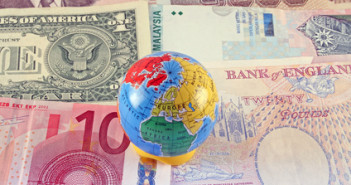- Funds are flowing out of emerging markets, big and small.
- The strengthening of the US Dollar weighs on trade unrelated to the US.
- The global economy enjoyed robust growth, but the peak may be near.
The Indian Rupee (INR) has reached a lifetime low against the US Dollar. The Chinese Yuan is being devalued on a daily basis. Argentina has called in the IMF to help stem the downfall of the local peso. These are only three examples of a broader phenomenon of money flowing out of emerging markets.
Higher US rates and trade concerns drive money out
There are various reasons for the move. The US Federal Reserve continues raising interest rates (and signaling more), making it less attractive to take risks abroad when returns can be higher in the US. Loans denominated in US Dollars are less attractive than they used to be. Fewer loans are taken while more are being paid back.
Also, Trump’s new tariffs are also contributing to the outflows. While the most vocal disputes are with Canada, Mexico, the European Union, and China, other countries are affected as well. Smaller emerging markets are part of the global supply chain. If a Chinese company sources parts from Vietnam for its exports to the US, the Vietnamese factory suffers as well. Expectations for trade barriers already impact investment decisions well before they are imposed.
The stronger dollar and trade barriers have another adverse effect. The US Dollar is the world’s reserve currency and also used in transactions between countries that do not use the greenback. A Brazilian importer of Argentinian goods will receive his invoice in USD rather than in the Argentinian peso nor the Brazilian Real. Any rise in the value of the greenback makes trade between both South American countries dearer and thus reduces trade. The same goes for inter-Asian trade and global trade in general.
A stronger Dollar is therefore detrimental for trade even if the transactions do not involve the US.
Developed countries have enjoyed robust growth in the past few years. The UK and the euro-zone have seen a deceleration in the first quarter, but that seemed temporary. The Canadian economy is doing well, the US economy is picking up steam, and Australia has not suffered a recession since the early 90s.
The focus has shifted from finding a job to getting decent pay. This is a far better situation than earlier in the decade.
But is this as good as it gets?Â
Peaking out?
If developed countries are in top shape, it does not necessarily mean they will continue growing. Perhaps they have reached the top, and it is easier to fall from higher ground.
Globalization has brought the world closer, with supply chains spread over multiple destinations and stock markets trading in closer tandem. What happens in Cambodia or Bolivia can be ignored by developed economies. If the rout spreads to Indonesia and Brazil, things can perhaps continue as they are. But what happens when India and China join the list of troubled countries?
The current situation can quickly turn from synchronized global growth to a synchronized global recession.
More:Â most vocal disputes



